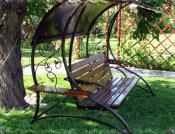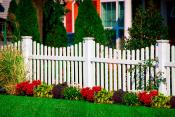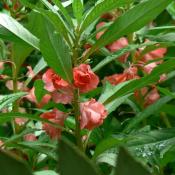Search
Login
We make an alpine hill - we choose plants and stones
Alpine slide, this is one of the main topics in landscape design. The combination of plants and stone creates wildlife in the garden, representing a natural rocky landscape. For most gardeners, an alpine slide with their own hands is one way of expression. Although the arrangement of the alpine hill is far from perfect, its neat, well-groomed appearance is a worthy reward to the florist for his care and love for plants. A rock garden can be created by the owner without the help of a professional landscape designer. This article will tell you how to choose the right material and make an alpine slide on your own.
Content
Location and soil preparation
For a rock garden, it is better to choose a sunny place, protected from strong winds, since alpine plants love warmth. In a sunny place you can arrange a rocky garden of any kind. Do not be upset if the proposed placement is in the shade, the choice of shade-tolerant plants is quite large. It is undesirable to place a rock garden under large deciduous trees, falling leaves will constantly clog it, flood it with raindrops and hide a sufficient supply of light.
The slide should not be strictly geometric shapes and installed in the middle of the garden, this will deprive it of naturalness. Ideally, when the line of the alpine hill is smooth, and the shape is formed freely.
When you have decided on a place, get rid of weeds if they are present on this site. This is easy to do with the help of herbicides, the soil must be cultivated two weeks before construction, during which time the herbicide will penetrate deep into the soil and destroy the roots of unwanted plants.
Most plants require good soil, the land in equal parts with coarse sand and peat, can quickly adapt to the needs of each plant. It will also be a useful addition to the soil, gravel, which provides a rapid flow of water, which is especially important for flowers sensitive to excess moisture.
Choose a stone
Stones for an alpine hill, this is the main material, it is advisable to use old stones covered with moss of the same breed. Stones of different breeds or overly decorative will distract and resemble mosaics. The recommended rocks for the slide are granite, limestone, quartzite, tuff, sandstone, etc. Among all, it is worth noting tuff, its ability to absorb and retain moisture is excellent for plants requiring very good drainage. You should know that tuff, dolomite and shell rock in our weather conditions are short-lived. If you have many granite elements in your garden, use the same material for the alpine slide.
The choice of plants will depend on the color of the stones in the future. Against a light background, it is preferable to plant flowers of dark shades; against a dark background, plants with silvery and pale green foliage will look good. Stones with sharp, broken edges will help emphasize the naturalness of the alpine corner in the garden.
The arrangement of stones occurs in such a way that around large stones, smaller ones are located. Large stones are buried in the soil about two-thirds of their size, slightly tilted back, which will ensure stability and allow drops of moisture to not fall on plants growing below. A great addition to the stone can be materials such as wood, sand, concrete elements.
Plants
For an alpine hill, alpine plants are mainly used. There are various perennial herbaceous, coniferous and climbing plants that grow in the natural environment on poor soil and extreme conditions (sun, strong wind). These plants are reliable in terms of unpretentiousness, the leaves are protected from dehydration in the sun, the root system easily absorbs moisture and nutrients.
When choosing plants, be guided not only by the attractive view of your hill, but also by the location. In a sunny area, large stones cast a shadow, under them it is recommended to plant shade-loving plants.
Perennials for sunny places:
- Astra Alpinus (flowering period May - June)
- Arabis Caucasian (May)
- Gypsophila creeping (May-August)
- Bell Carpatica (June-September)
- Sempervivum juvenile (May-September)
- Lumbago (March - April)
- Saxifraga Saxifraga (May-June)
- Edelweiss Alpine (June August)
- Chrysanthemum (June-July)
- Stonecrop rocky (June - September)
Plants for shady places:
- Neapolitan cyclamen (flowering period August-September)
- Little creeper (May - August)
- Ramonda (May-June)
- Lily of the valley (May - June)
- Primrose (April - June)
- Anemone (May-June)
- Rhododendron (April-July)
- Hydrangea (July-September)
- Sedge (May-July)
- Hybrid Peony (May-June)
Please note that all plants for the Alpine slide differ in varieties and flowering periods, the average dates are indicated here. Also, the flowering period depends on your geographical location.
In order for the alpine hill to please during the winter cold season, conifers are planted, for example, juniper, Serbian and eastern spruce, mountain pine, cypress.
The landscape design of the alpine hill is formed with the help of selected plants, taking into account their color and flowering period.
DIY Alpine slide
Care
After creating an alpine hill, regularly check the integrity of the stones and observe the plants. Some plants may require additional soil (if the roots are visible) and fertilizers (this will be noticeable on the faded leaves). Flowers for an alpine hill are watered as the soil dries. During a routine check, carefully inspect plants for pests and diseases.





